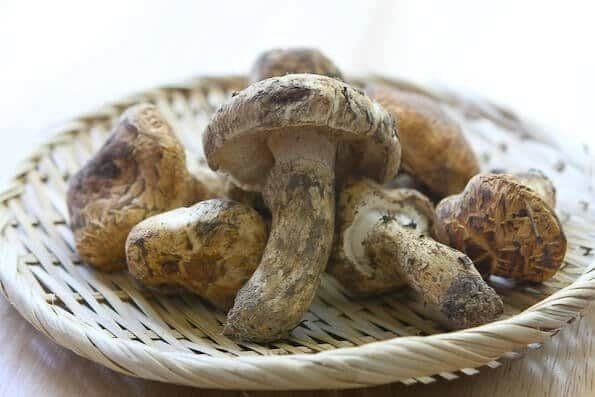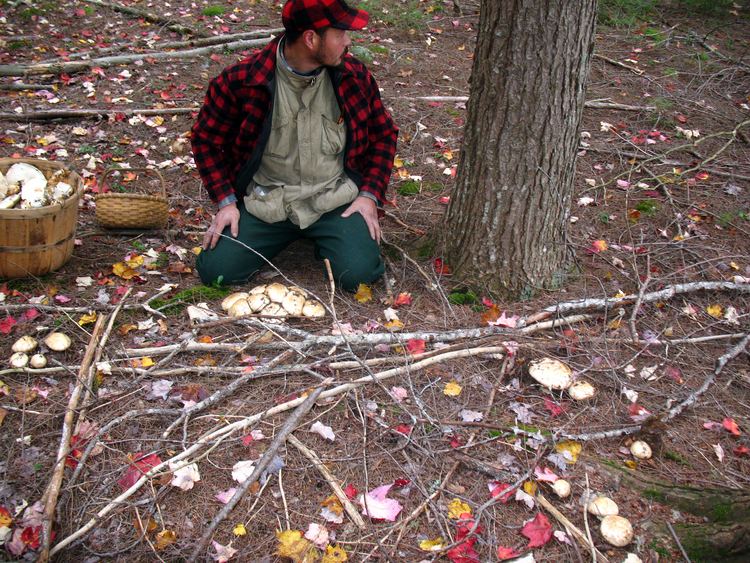Kingdom Fungi Order Agaricales Rank Species | Division Basidiomycota Scientific name Tricholoma matsutake Higher classification Tricholoma | |
Similar Mushroom, Shiitake, Hen‑of‑the‑wood, Pleurotus eryngii, Shimeji | ||
N ng n m matsutake nh h ng nh t b n paku paku
Matsutake (Chinese & Japanese:松茸, pine mushroom, Tricholoma matsutake = syn. T. nauseosum) is the common name for a highly sought-after mycorrhizal mushroom that grows in Asia, Europe, and North America. It is prized in Japanese, Korean, and Chinese cuisine for its distinct spicy-aromatic odor.
Contents
- N ng n m matsutake nh h ng nh t b n paku paku
- How to find matsutake pine mushrooms vancouver island
- Habitat and distribution
- Similar species
- Cost and availability
- References

How to find matsutake pine mushrooms vancouver island
Habitat and distribution

Matsutake grow under trees and are usually concealed under duff on the forest floor free of non-symbiotic trees, e.g. broad-leaved. It forms a symbiotic relationship with the roots of a limited number of tree species. Matsutake are known to grow in China, Japan, Korea, Laos, Canada, Finland, the United States, and Sweden, among other countries. In Japan it is most commonly associated with Japanese red pine.
Similar species

In the North American Pacific Northwest Tricholoma magnivelare is found in coniferous forests made up of one or more of the following species: Douglas fir, Noble Fir, Shasta Red Fir, Sugar Pine, Ponderosa Pine, or Lodgepole Pine. In California and parts of Oregon, it is also associated with hardwoods, including Tanoak, Madrone, Rhododendron, Salal, and Manzanita. In northeastern North America, the mushroom is generally found in Jack Pine forests. T. magnivelare is typically called White Matsutake as it does not feature the brown coloration of the Asian specimen.

A report published in 2000 indicates that Tricholoma nauseosum and matsutake (T. matsutake) are the same species. The report led to increased export of matsutake from northern Europe to Japan because of the comparable flavor and taste.
Cost and availability

Though simple to harvest, matsutake are hard to find because of their specific growth requirements and the rarity of appropriate forest and terrain, combined with competition from local folk and wild animals such as squirrel, rabbits and deer for the once-yearly harvest of mushrooms, causing the price to be very high at times or as low as $2 per pound for pickers when the market will bear it. Domestic production of matsutake in Japan has been sharply reduced over the last 50 years due to the pine-killing nematode Bursaphelenchus xylophilus, which has influenced the price a great deal. The annual harvest of matsutake in Japan is now less than 1,000 tons, and the Japanese mushroom supply is largely made up by imports from China, Korea, the North American Pacific Northwest (Northern California, Oregon, Washington, and British Columbia), and Northern Europe (Sweden and Finland). The price for matsutake in the Japanese market is highly dependent on quality, availability, and origin. The Japanese matsutake at the beginning of the season, which is the highest grade, can go up to $1,000 per kilogram. In contrast, the average value for imported matsutake is about $90 per kilogram.
